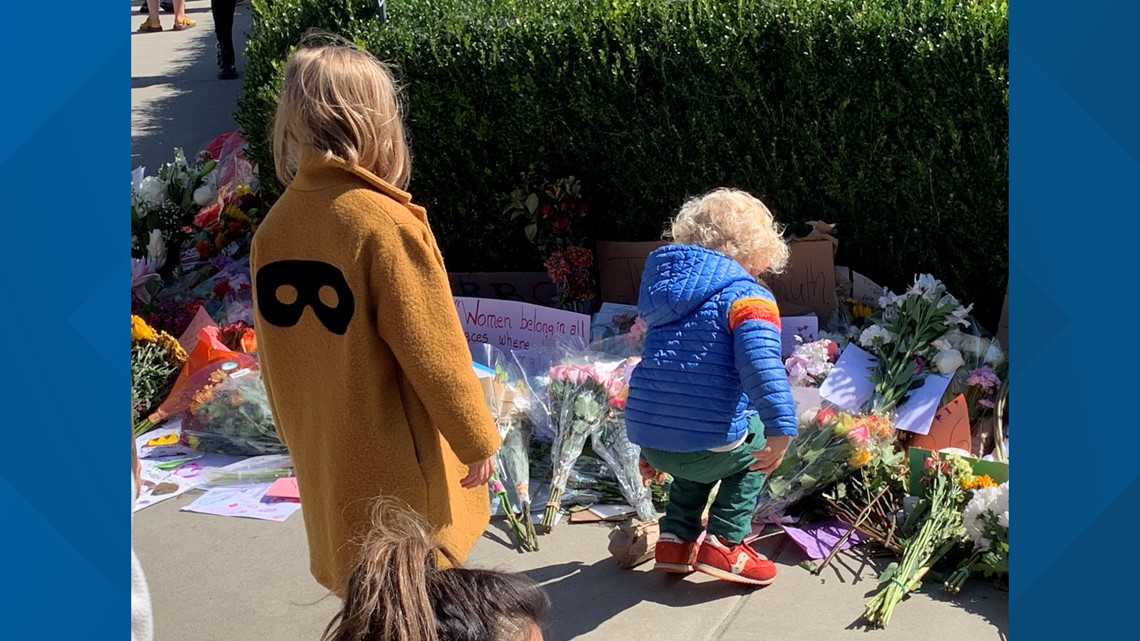WASHINGTON — Mourners flooded the steps of the Supreme Court today, many of them women, who say Ruth Bader Ginsburg is the reason they were able to pursue their passions and stand up for themselves in the work arena.
“There was a lot of weight on her shoulders, we didn’t think she would live forever, but thought she would be around a little longer. It feels like a death in the family, like the loss of a grandmother," said Janelle Diamond. Diamond says as a mother and mother of a daughter, she was compelled to pay her respects to the woman who spent a lifetime making the law work for women.
In 1971, she was instrumental in launching the Women’s Rights Project of the American Civil Liberties Union, and served as the ACLU’s General Counsel from 1973–1980, and on the National Board of Directors from 1974–1980. She was appointed a Judge of the United States Court of Appeals for the District of Columbia Circuit in 1980. During her more than 40 years as a judge and a Justice, she was served by 159 law clerks.
The justice is also responsible for fighting to open the doors of the Virginia Military Institute to women.
Ginsburg, while small in stature, became a giant voice in litigating women's rights that catapulted her to pop culture icon status and being named the Notorious R.B.G..
On the last leg of her D.C. vacation, Laura Seay made a point to stop at SCOTUS and remember the woman that she says made it possible for her to become a political scientist.
“The reason that I pursued the career that I pursued, that I could have the assurance that I’m getting paid fairly for my work. All the protections that women have for maternity leave, it’s almost incalculable," said Seay.
“We were looking at the court and it says equal justice under the law. That didn’t exist for women before she came along," said Seay.


According to the Supreme Court, Justice Ginsburg was born in Brooklyn, New York, March 15, 1933. She married Martin D. Ginsburg in 1954. She received her B.A. from Cornell University, attended Harvard Law School, and received her LL.B. from Columbia Law School.


She served as a law clerk to the Honorable Edmund L. Palmieri, Judge of the United States District Court for the Southern District of New York, from 1959–1961. From 1961–1963, she was a research associate and then associate director of the Columbia Law School Project on International Procedure. She was a Professor of Law at Rutgers University School of Law from 1963–1972, and Columbia Law School from 1972–1980, and a fellow at the Center for Advanced Study in the Behavioral Sciences in Stanford, California from 1977–1978. In 1971, she was instrumental in launching the Women’s Rights Project of the American Civil Liberties Union, and served as the ACLU’s General Counsel from 1973–1980, and on the National Board of Directors from 1974–1980. She was appointed a Judge of the United States Court of Appeals for the District of Columbia Circuit in 1980.

